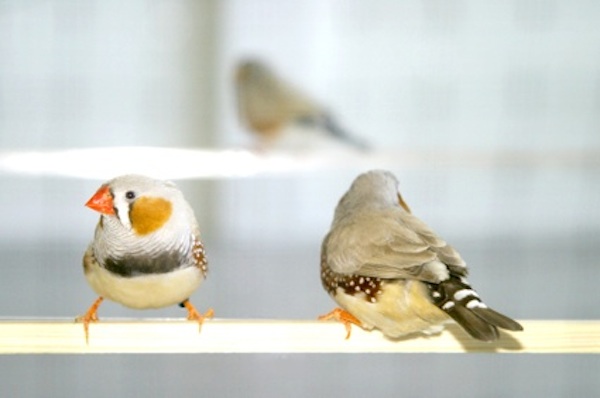NASA's Voyager craft have Watch Workplace Picnic Goal Onlineventured where no other human machines have ever gone — the space between the stars. But that comes with a cost.
At some 15 and 12 billion miles away, Voyager 1 and 2 are beyond the protective bubble of the sun, called the heliosphere. Out in this realm of interstellar space, the nearly 50-year-old probes have a higher probability of damage from hostile, high-speed particles, called galactic cosmic rays, owing to a higher number of particles zooming by every second.
"We are dodging bullets out there," Alan Cummings, a cosmic-ray physicist at Caltech — the research university that manages NASA's Jet Propulsion Laboratory — told Mashable. Cummings began working on the Voyager mission 51 years ago.
But direct hits are inevitable. In 2010, while on the edge of our solar system's heliosphere, Voyager 2 unexpectedly began sending gibberish back to Earth. Cummings suspects that a passing galactic cosmic ray tripped part of a computer's memory — though NASA was eventually able to rectify the problem. Most recently, Voyager 1 failed to send back readable data for five months, a particularly worrying incident that may also have been triggered by a cosmic ray. Something corrupted a computer chip.
"We don't know everything," Cummings explained, referencing the difficulty in perfectly diagnosing such profoundly distant mishaps. "But I do think galactic cosmic rays are the guilty party here for most of these problems."
"We are dodging bullets out there."
Galactic cosmic rays are merciless because they're extremely tiny, charged particles, traveling at incredible speeds — nearly the speed of light. "The galaxy is permeated with galactic cosmic rays," Cummings marveled. Astronomers think violently exploding stars — supernovae — are responsible for creating many of these particles, as the colossal shock wave from the event accelerates the particles. Stripped of their outer shells, they hurtle through space as just the nuclei of atoms.
The heavier ones, like iron atoms transformed into galactic cosmic rays, can cause more damage than the lighter, more abundant ones. (It's somewhat like getting hit by a bowling ball at 50 mph, versus a golf ball.) They can zip right through a computer chip — altering its code — or even become lodged there, where they can pack an even bigger punch by doing permanent damage.
 A graphic showing Voyager 1 and 2 having traveled beyond the sun's partially protective heliosphere, and into interstellar space. Credit: NASA / JPL-Caltech
A graphic showing Voyager 1 and 2 having traveled beyond the sun's partially protective heliosphere, and into interstellar space. Credit: NASA / JPL-Caltech  Engineers installing a golden record — containing music, sounds, and imagery from Earth — to the side of Voyager 1. Credit: NASA / JPL-Caltech
Engineers installing a golden record — containing music, sounds, and imagery from Earth — to the side of Voyager 1. Credit: NASA / JPL-Caltech Of course, NASA spacecraft like the Voyagers are equipped with radiation-resistant parts and shielding, including wrapping around critical cables. These layers can keep out some particles — but not all. "You can protect yourself to some extent, but a high-enough-energy particle will get through your defenses," Cummings explained. Early in the Voyager mission, the space agency's engineers were worried about the craft passing by Jupiter, a planet that produces intense radiation. A person hypothetically riding aboard Voyager would have gotten hit with a radiation dose 1,000 times the lethal level. "That was pretty hostile," Cummings recalled. He said a few detectors on his galactic-ray measuring instrument (the Cosmic Ray Subsystem)were wounded, but overall, both the instrument and entire spacecraft survived to produce new scientific results, including vibrant, unprecedented imagery.
Yet out in the deeper cosmos, the Voyagers face a different threat. Around the gas giant Jupiter, the craft were sprayed with charged particles, but they were lower energy. Now in interstellar space, the craft are more often exposed to those high-energy particles. Any place in space — whether in our solar system or beyond — can meet the threat of a harmful galactic cosmic ray. But the odds are boosted in the interstellar realm.
"Explorers run into problems when they enter into new territory."
When might another such hit come? "It's just a random chance out there right now," Cummings said.
 The Voyager team celebrates after restoring some communication to Voyager 1 on April 20, 2024. Credit: NASA / JPL-Caltech
The Voyager team celebrates after restoring some communication to Voyager 1 on April 20, 2024. Credit: NASA / JPL-Caltech Billions of miles away, on Earth, in sunny Pasadena, California, however, the craft have a guardian. Or, a legion of guardians. NASA engineers have for decades devised ways to keep the aging, radiation-pummeled craft alive. They communicate with vintage computers aboard the nearly half-century old probes. Talking to an interstellar craft isn't like sending a text: It takes almost two days to transmit and then receive a message. Most recently, in April, NASA engineers squared off with a permanently-damaged computer chip on Voyager 1. By beaming messages to the craft, over 15 billion miles away, they successfully stored the defunct chip's unique code in other chips, as "no single location is large enough to hold the section of code in its entirety," the agency explained. The craft is once again communicating about its health, but not yet returning science data.
"You have to praise the engineers," Cummings emphasized.
They've certainly been busy. And in hostile space, with high-speed particles ceaselessly whizzing by, they'll likely continue to be. The craft are running low on nuclear fuel, but could — if undamaged — beam back unprecedented readings from uncharted space through the mid-2030s.
"Explorers run into problems when they enter into new territory,"Cummings said. "Lewis and Clark didn't have an easy time, either."
 The People’s Platform Goes to Washington
The People’s Platform Goes to Washington
 Twitter confirms Trump's ban is permanent, even if he runs again in 2024
Twitter confirms Trump's ban is permanent, even if he runs again in 2024
 Reddit's API protest just made John Oliver a special job offer
Reddit's API protest just made John Oliver a special job offer
 Seamus Heaney, 1939–2013 by Sadie Stein
Seamus Heaney, 1939–2013 by Sadie Stein
 Period Feminism
Period Feminism
 Nowhere to Go But Everywhere by Sadie Stein
Nowhere to Go But Everywhere by Sadie Stein
 Finch Printing, and Other News by Sadie Stein
Finch Printing, and Other News by Sadie Stein
 Fifty Shades of Rage, and Other News by Sadie Stein
Fifty Shades of Rage, and Other News by Sadie Stein
 Blood Will Out
Blood Will Out
 'Quordle' today: See each 'Quordle' answer and hints for July 10
'Quordle' today: See each 'Quordle' answer and hints for July 10
 A Farewell to the Impossible Kyrie Irving
A Farewell to the Impossible Kyrie Irving
 In Memoriam: John Hollander by Jeff Dolven and Lorin Stein
In Memoriam: John Hollander by Jeff Dolven and Lorin Stein
 Don't spontaneously FaceTime people and expect them to pick up
Don't spontaneously FaceTime people and expect them to pick up
 Tucker Carlson's Twitter show viewership is declining
Tucker Carlson's Twitter show viewership is declining
 K Street Taxpocalypse
K Street Taxpocalypse
 Lidija Dimkovska, Skopje, Macedonia by Matteo Pericoli
Lidija Dimkovska, Skopje, Macedonia by Matteo Pericoli
 How to save disappearing messages on Whatsapp
How to save disappearing messages on Whatsapp
 How to add mentions in an Instagram Story after it's posted
How to add mentions in an Instagram Story after it's posted
 The Conversion of Gucci Mane
The Conversion of Gucci Mane
 Damned Spot by Sadie Stein
Damned Spot by Sadie Stein
Linksys says its new WiFi 6E mesh router can support 65 devicesPeople freak out after Amazon sends emails about nonexistent baby registriesMark Zuckerberg is gifting as much as $12.8 billion to his own foundation in 2018WhatsApp clarifies it cannot see your private messagesUm. Kylie Jenner is reportedly pregnant.Pornhub: 'Talk Like a Pirate' day inspired some very XThis pigeon is way more religious than you'll ever beKilling Zero Latency VR's zombies is even more fun with familyUm. Kylie Jenner is reportedly pregnant.'Skyrim' player's dating life is literally all of us'Blithe Spirit' is a bit of forgettable fun for a drab, drizzly eveningBran Stark has started university in the UK and no one can handle itTerrifying faceless illusion makeup is straight out of a Salvador Dali paintingHBO Max's 'Locked Down' starring Anne Hathaway: Movie review'Skyrim' player's dating life is literally all of usHarry Styles kicked off his world tour with a pride flag tied to his microphoneThe AirPop Active+ Halo is a true 'smart mask' for your lungsSamsung shows off housekeeping robots at CES 2021What to expect from Samsung Galaxy Unpacked 2021'ASMR toys' at big box stores may just be fidget toys in disguise NYT Connections hints and answers for February 23: Tips to solve 'Connections' #623. Best Garmin vívoactive 5 deal: Save $70 at Best Buy Best Samsung deal: Save $230 on Samsung Galaxy Watch Ultra Free Pokémon trading card event: How to get free Pikachu promo card on Feb. 22 NYT Strands hints, answers for February 21 Wales vs. Ireland 2025 livestream: Watch Six Nations for free Best laptop deal: Save $300 on the Asus ProArt PZ13 at Best Buy An anglerfish’s search for the sun goes viral, but science has a different story Best Samsung TV deal: Save $569 on 75 Twitch streamers' uploads, highlights capped at 100 hours Anker Prime Power Bank deal: Get it for $149.99 Old NASA mission reveals an unlikely world harbors an ocean Best speaker deal: Save $64.55 on the Ultimate Ears Megaboom 4 'Monster Train' sequel announced, with surprise demo out now Best iPhone Case deal: Apple iPhone 15 silicone case for $9.99 NYT Strands hints, answers for February 23 'Severance' Season 2, episode 6: What's with those documents Mr. Drummond finds? Best Samsung Galaxy Buds 3 Pro deal: Get them for $125.99 at Amazon Best Garmin deal: Garmin Instinct 2 for under $200 Google pulls Gemini from its iOS search app, driving users toward standalone AI app
2.4939s , 10155.8203125 kb
Copyright © 2025 Powered by 【Watch Workplace Picnic Goal Online】,Pursuit Information Network